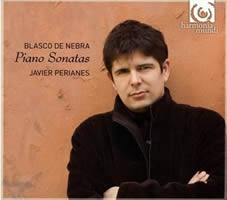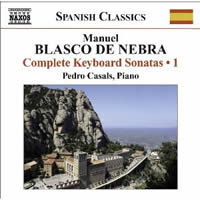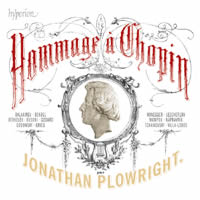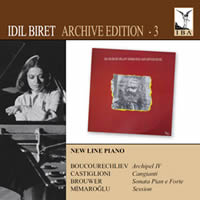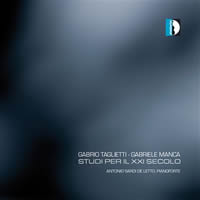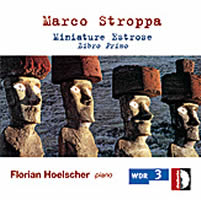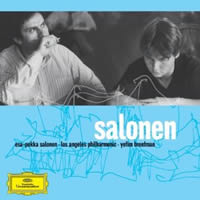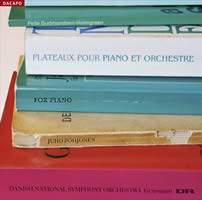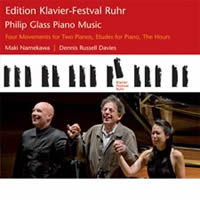Piano Factory 6.
|
Grant Chu Covell [July 2010.]
Manuel BLASCO DE NEBRA: Six Sonatas; Two Pastorelas. Javier Perianes (pno). Harmonia Mundi HMC 902046 (http://www.harmoniamundi.com/). “Complete Keyboard Sonatas, 1.” Manuel BLASCO DE NEBRA: Sonatas. Pedro Casals (pno). Naxos 8.572068 (http://www.naxos.com/). Blasco de Nebra (1750-84) was based in Seville. His two-movement sonatas (slow-fast) pick up a thread begun by D. Scarlatti and stick to Classical models. Perianes appears to think that this is Schubert or perhaps Beethoven, what with a rubato befitting Chopin along with other unsettling accoutrements. Casals’ preferable interpretation aligns with the period. A side-by-side comparison makes clear Harmonia Mundi’s superiority with respect to sonics. Naxos intends to spread Blasco de Nebra’s extant sonatas across three discs. There appears to be no consistent cataloguing scheme for the 26 sonatas and six pastorelas. Harmonia Mundi offers Nos. 1, 2 and 5 from a 1964 Op. 1 publication and Nos. 3, 4 and 6 from a set held in a Montserrat monastery. Naxos presents six (numbered 107-112) from a collection at Osuna Encarnación Monastery, plus two from a convent, and Montserrat Nos. 1-5. The only overlaps are Nos. 3 and 4 from Montserrat. Played in keeping with the epoch, Casals renders Blasco de Nebra’s unexpected dissonance and striking rhythms as the more exciting. His is the series to watch.
“Hommage à Chopin.” Mili BALAKIREV: Impromptu on the themes of two Preludes by Chopin (1907). Franz BENDEL: Hommage à Chopin, Op. 111, No. 1 (1867). Edvard GRIEG: Studie (Hommage à Chopin), Op. 73, No. 5 (1901-05). Ferruccio BUSONI: Ten Variations on a Prelude of Chopin in C minor, BV213a (1884, rev. 1922). Eduard NÁPRAVNÍK: Notturno (La reminiscence de Chopin), Op. 48, No. 1 (1894). Pyotr TCHAIKOVSKY: Un poco di Chopin, Op. 72, No. 15 (1893). Arthur HONEGGER: Souvenir de Chopin (1946). Sir Lennox BERKELEY: Three Mazurkas, Op. 32 (1940, 49). Heitor VILLA-LOBOS: Hommage à Chopin (1849). Federico MOMPOU: Variations sur un thème de Chopin (1938-57). Benjamin GODARD: Hommage à Chopin, Op. 66, No. 2 (1888). Leopold GODOWSKY: Profil (Chopin) (1911). Theodor LESCHETIZKY: Hommage à Chopin, Op. 46, No. 9 (1902). Jonathan Plowright (pno). Hyperion CDA67803 (http://www.hyperion-records.co.uk/). Distributed in the US by Harmonia Mundi (http://www.harmoniamundi.com/). Plowright’s varied collection demonstrates Chopin’s longlasting influence. The best pieces also quantify Chopin’s uniqueness, e.g., chromatic melodies hovering over basic chord progressions. It’s strange to hear composers who ignore this and position Chopin’s gestures amid Debussian harmonies. The standouts are Busoni and Mompou’s variation sets. Busoni wrote the first version at age 18. Late in life he toned down the Lisztisms and excised a fugue. What we hear in the present instance remains a concert showpiece with harmonies that gently stray into the 20th century. The largest offering clocks in at 21:27. Mompou’s set is a winsome kaleidoscope built upon the A major Prelude, Op. 28 No. 7. I heard variations that touched on Berg, Brahms and When You Wish Upon a Star. You can argue that the Balakirev, Godowsky and Leschetizky all sound the same, yet Plowright delivers a wonderful, luxuriant sameness.
“Idil Biret Archive Edition — 3: New Line Piano.” André BOUCOURECHLIEV: Archipel IV (1970). Niccolò CASTIGLIONI: Cangianti (1959). Leo BROUWER: Sonata Pian e Forte (1970). İlhan MİMAROĞLU: Session (1975). Idil Biret (pno). Idil Biret Archive IBA026 (http://www.idilbiretarchive.eu). Distributed in the US by Naxos (http://www.naxos.com/). Having found her 1995 award-winning Diapason d’Or release of the Boulez sonatas (Naxos 8.553353) rather dull, I’ve taken scant notice of Biret’s work since. Naxos claims sales of 30,000 copies within six months of its release! This reissue of a 1977 Finnadar LP demonstrates Biret’s competency at what were at the time mystifying pieces. The Boucourechliev and Castiglioni are solo works, the former with its restless crashing chords, the latter with characteristic mid- to high-tessitura fidgeting. The remaining two compositions incorporate tapes. Brouwer’s pre-recorded piano includes bits of Gabrieli and Beethoven. Mimaroğlu adds distorted sound and comical snippets of earlier-recorded speech, including what sounds like Finnadar’s actual contract with the performer and part of an essay by Marx. A quote compares Mimaroğlu to Nono. Never mind apples and oranges. This equates a circus with a mass. Yet I can see how their once-provocative references would have tempted one to lump them together. Since all four composers are presently underrepresented, we should be grateful for these well-done artifacts. Brouwer, Boucourechliev, Castiglioni and Mimaroglu have appeared in these pages at one time or another.
“Studi per il XXI secolo.” Gabrio TAGLIETTI: Otto Studi (1999-2006). Gabriele MANCA: Études d’un ticqueur (2007); Studi meccanici (2004-07). Antonio Sardi de Letto (pno). Stradivarius STR 33827 (http://www.stradivarius.it/). Distributed in the US by Allegro Music (http://www.allegro-music.com/). Marco STROPPA: Miniature Estrose, Libro Primo (1991-2001). Florian Hoelscher (pno). Stradivarius STR 33713 (http://www.stradivarius.it/). Distributed in the US by Allegro Music (http://www.allegro-music.com/). Taglietti’s eight etudes explore the piano’s colors. After nods to Ligeti and Nancarrow, Taglietti’s rhythmic and harmonic aesthetic emerges. Among the eight, Catacombe weaves through Mussorgsky. Il gatto e il gomitolo (The Cat and the Ball of Wool) alternates motion with dramatic distractions. Manca’s flashy Études d’un ticqueur aren’t as twitchy as the title suggests, and the Studi meccanici frolic with bold modernist gestures. De Letto makes it all seem so effortless. Stroppa’s title may perplex: Miniature doesn’t imply a short piece but rather a miniaturized, finely detailed scale. Estrose harkens to Vivaldi’s L’Estro Armonico to suggest the eccentric. The First Book contains seven solo piano pieces to be played in any order. Varying in length and scale (at 3:24 Birichino is the shortest, Prologos. Anagnorisis I is 12:58), each requires the sostenuto pedal for several pitches’ undampened resonance. The resulting cloud’s haziness drifts from piece to piece. A quasi-electronic atmosphere saturates Stroppa’s gymnastic changes in texture and pace. Two pieces, Tangata Manu and Moai, refer to Easter Island.
Esa-Pekka SALONEN: Helix (2005); Piano Concerto (2007)*; Dichotomie (2000)*. Yefim Bronfman* (pno), Los Angeles Philharmonic, Esa-Pekka Salonen (cond.). DG 002894778103 (1 SACD) (http://www.deutschegrammophon.com/). As much as I want to enjoy Salonen’s colorful and robust music, I’ve had difficulty locating its substance. The flamboyant orchestral overture, Helix, unfurls stiffly despite the composer’s capable direction. I had expected greater frenzy. The Piano Concerto weds John Adams to Debussy. Alan Rich’s notes set the bar high: “Play this for people who tell you that composers today have lost the power to write beautiful music.” The 17:36 Dichotomie’s two movements, Mécanisme and Organisme, are why this disc warrants mentioning. Perhaps the solo piano’s monochrome clarifies motivic development and reappearing chords. Salonen’s debt to Albéniz and Ravel is evident. And Bronfman also sounds more comfortable here than in the splashy Concerto.
Pelle GUDMUNDSEN-HOLMGREEN: Plateaux pour piano et orchestra (2005); For Piano (1992). Juho Pohjonen (pno), Danish National Symphony Orchestra, Ed Spanjaard (cond.). Dacapo 6.220533 (1 SACD) (http://www.dacapo-records.dk/). Distributed in the US by Naxos (http://www.naxos.com/). Gudmundsen-Holmgreen is an inveterate joker: His 1970 Plateaux pour deux is scored for cello and bicycle horn. Thus do we anticipate drollery from Plateaux pour piano et orchestra. The multi-part concerto, “nine small peeps through a keyhole,” offers rainbow shards ranging from 0:44 to 10:43. Mozart, Bartók and late Stravinsky are clear stylistic influences. Three movements entitled Brut provide rumbling bass and assertive chords as the piano runs with the bulls. Other movements (Composition) seek beauty. An earlier solo composition, For Piano, collects three apparently unrelated movements which can be played separately. Sound and Silence volleys strong, dissonant chords from which slivers of something like Beethoven pop up. Lullaby oscillates two chords over a restless idea. Keep Going (Little Bird, Blue) continues the same melody / accompaniment idea, with a dab of synchronization between the hands. The first piece’s verticality contradicts the apparent traditionalism of the near-to-tuneful second and third. A disarming collection resembles a display of dazzling toys you’re not allowed to touch. Pohjonen knows his way around.
Philip GLASS: Four Movements for Two Pianos (2008); Six Etudes for Piano (1994, orig. ver.)*; Music from The Hours (2002, arr. Michael Riesman). Maki Namekawa, Dennis Russell Davies* (pnos). Orange Mountain Music OMM 0060 (http://www.orangemountainmusic.com/). Distributed in the US by Harmonia Mundi (http://www.harmoniamundi.com/). Imagine! — Glass sounding like Bruckner and Chabrier! Commissioned by the Ruhr Piano Festival and premiered by Namekawa and Davies in 2008, Four Movements embraces two-piano repertoire from Schubert onward to which are affixed Glass’ standard gestures (first-beat chord changes, oscillating thirds, etc.). Six Etudes (Davies) wade through the trance states we customarily associated with Glass. The arranged music from The Hours (Namekawa) demonstrates the composer’s storytelling skills — you can almost smell the rose-petal potpourri. Namekawa plays more romantically than Davies: The Etudes are mechanical whereas The Hours excerpts are lyrical. Four Movements shuffle the players’ ranges.
Balakirev, Blasco de Nebra, Boucourechliev, Brouwer, Busoni, Castiglioni, Glass, Godard, Godowsky, Grieg, Gudmundsen-Holmgreen, Honegger, Leschetizky, Manca, Mimaroglu, Mompou, Salonen, Stroppa, Taglietti, Tchaikovsky, Villa-Lobos
[More Grant Chu Covell, Piano Factory]
[More
Balakirev, Blasco de Nebra, Boucourechliev, Brouwer, Busoni, Castiglioni, Glass, Godard, Godowsky, Grieg, Gudmundsen-Holmgreen, Honegger, Leschetizky, Manca, Mimaroglu, Mompou, Salonen, Stroppa, Taglietti, Tchaikovsky, Villa-Lobos]
[Previous Article:
Biber on Symphonia]
[Next Article:
Misdelivered]
|
